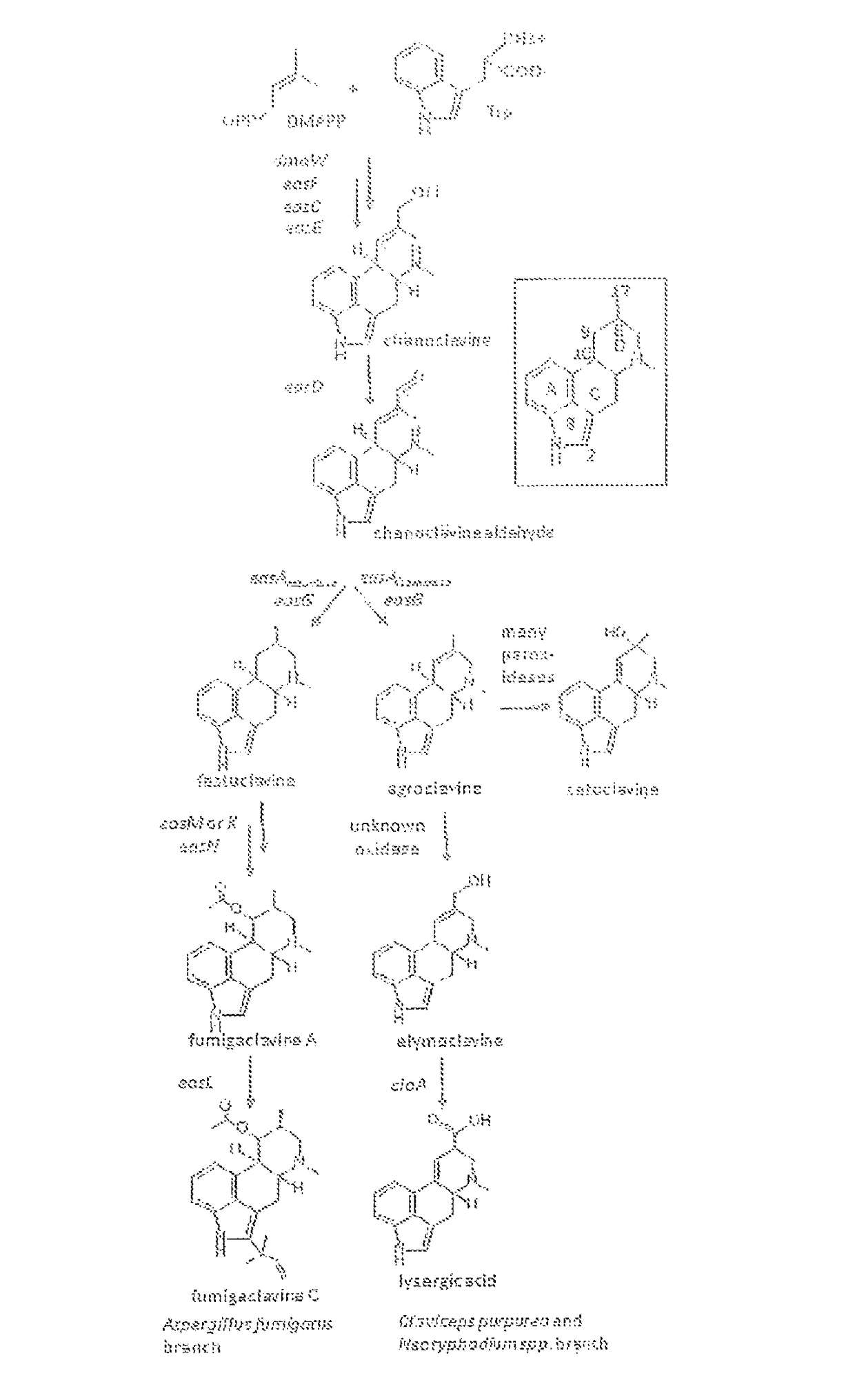Production of lysergic acid by genetic modification of a fungus
a technology of lysergic acid and genetic modification, which is applied in the direction of fungi, fermentation, dna/rna fragmentation, etc., can solve the problems of unsolved important aspects of ergot alkaloid biosynthesis and inability to guarantee alkaloid production
- Summary
- Abstract
- Description
- Claims
- Application Information
AI Technical Summary
Benefits of technology
Problems solved by technology
Method used
Image
Examples
Embodiment Construction
[0055]Different lineages of fungi produce distinct classes of ergot alkaloids. Lysergic acid-derived ergot alkaloids produced by fungi in the Clavicipitaceae are particularly important in agriculture and medicine. The pathway to lysergic acid is partly elucidated, but the gene encoding the enzyme that oxidizes the intermediate agroclavine is unknown. We investigated two candidate agroclavine oxidase genes from the fungus Epichloë festucae var. lolii×Epichloë typhina isolate Lp1 (henceforth E. sp. Lp1), which produces lysergic acid-derived ergot alkaloids. Candidate genes easH and cloA were expressed in a mutant strain of the mold Aspergillus fumigatus, which typically produces a subclass of ergot alkaloids not derived from agroclavine or lysergic acid. Candidate genes were co-expressed with the E. sp. Lp1 allele of easA, which encodes an enzyme that catalyzed the synthesis of agroclavine from an A. fumigatus intermediate; the agroclavine then served as substrate for the candidate ag...
PUM
| Property | Measurement | Unit |
|---|---|---|
| surface area | aaaaa | aaaaa |
| weight | aaaaa | aaaaa |
| width | aaaaa | aaaaa |
Abstract
Description
Claims
Application Information
 Login to View More
Login to View More - R&D
- Intellectual Property
- Life Sciences
- Materials
- Tech Scout
- Unparalleled Data Quality
- Higher Quality Content
- 60% Fewer Hallucinations
Browse by: Latest US Patents, China's latest patents, Technical Efficacy Thesaurus, Application Domain, Technology Topic, Popular Technical Reports.
© 2025 PatSnap. All rights reserved.Legal|Privacy policy|Modern Slavery Act Transparency Statement|Sitemap|About US| Contact US: help@patsnap.com



